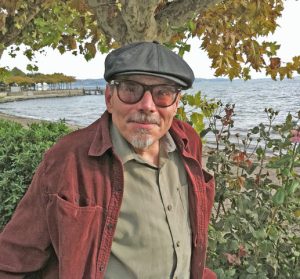The Paul Andrew Spudich Fund has been established at SSA to honor the life and accomplishments of Paul Andrew Spudich (1950-2019), a giant in seismology.
The Paul Andrew Spudich Fund provides support to early-career and student members who have a research focus on earthquake source physics or ground motion prediction, areas Spudich made important contributions to during his distinguished career as a seismologist with the U.S. Geological Survey (USGS).
Welcoming applications in February, the fund will provide annual travel grants of up to $3,500 for travel to seismological conferences worldwide, fostering the exchange of information that is vital to scientific progress.
SSA welcomes donations to honor a beloved member of the SSA community and grow the program so that it can provide additional needed support to those early in their careers.
For more information about the grant program, visit The Paul Andrew Spudich Travel Grant page.
DONATE TO THE PAUL ANDREW SPUDICH FUND
Remembering Paul Andrew Spudich (1950-2019)

A pioneering scientist
A travel grant fund that helps the next generation of researchers learn and network seems an especially fitting way to honor Paul Andrew Spudich. He collaborated with seismologists worldwide, and many of the scientists he mentored and encouraged in their early years went on to become leaders in seismology.
Greg Beroza, Wayne Loel Professor of Earth Sciences at Stanford University, completed most of his thesis under Spudich’s guidance. He recalls the wild scientific ideas that filled many notebooks in Spudich’s office. He also notes his “rebellious streak,” pointing to the example of Spudich’s “paper on the determination of absolute stress levels from seismic radiation, which was superficially thought to be impossible.”
The broad impact of his fieldwork and theoretical studies earned him accolades, including the Department of Interior’s Distinguished Service Award, the department’s highest honor. In their nomination letter for this award, Spudich’s USGS colleagues pointed to his impressive body of scientific work that began early in his career when he analyzed data from a seismic array in the Imperial Valley of Southern California to show that the direction and speed of earthquake rupture propagation impacted levels of strong ground motion. The effort grew into a major initiative to record repeating magnitude 6 earthquakes at Parkfield, CA, where Spudich and his colleagues detected northward propagation of the 2004 earthquake.
Peggy Hellweg, SSA past president, worked with Spudich, her supervisor at the USGS for five years, on this project as well as the study he led to characterize possible shaking at the proposed site for storing nuclear waste at Yucca Mountain, Nevada. “I always felt valued when working with Paul, and appreciated his ability to mentor me while including my ideas in progress on the projects,” she says. “Paul’s high research ethics also impressed me, as did his subtle sense of humor.”
Spudich was also recognized for developing an advanced theoretical technique called the isochrone theory for synthesizing high-frequency ground motions. His work on source modeling, performed with colleagues from the Insituto Nazionale di Geofisica e Vulcanolgia, was described as remarkable by his USGS colleagues, “rather than determining a single finite-fault model for an earthquake by fitting a set of waveforms, they determined a population of acceptable models. This approach obtains the most salient characteristics of the rupture process and demonstrates the limits of the data and the source inversion process.”
An SSA member from 1977 to his final year of life, Spudich devoted great care and thought to his volunteer service to our community. He was one of the first contributors to The Joyner Fund that supports the Joyner Lecture series. A member of SSA’s Board of Directors and Honors Committee, he worked to give members a greater voice in the Society’s annual awards program.
SSA President Ruth Harris remembers his contributions well. “He devoted great care and thought to his visionary ground-breaking science and to his volunteer service to our community,” she says. “He wrote the detailed version of the guidelines for the SSA awards. He put a lot of time and thought into that effort, as he did with everything he tackled, both for SSA and for his other activities. He was very conscientious and thoughtful in all that he did, and we all benefited from his efforts.”
Additional donations are invited to the fund so that it can grow and enable SSA to provide an increasing number of annual grants in the future.
To learn more about Paul’s life and how he is remembered in the SSA community, visit SSA News.
